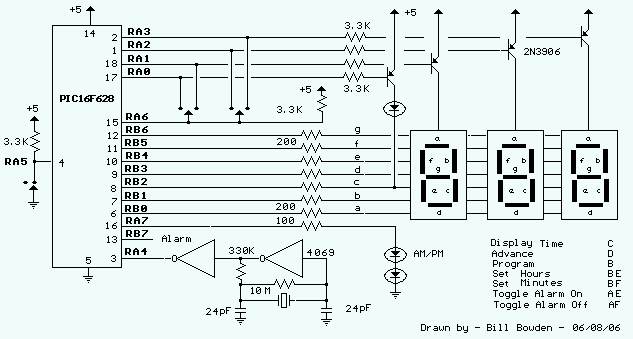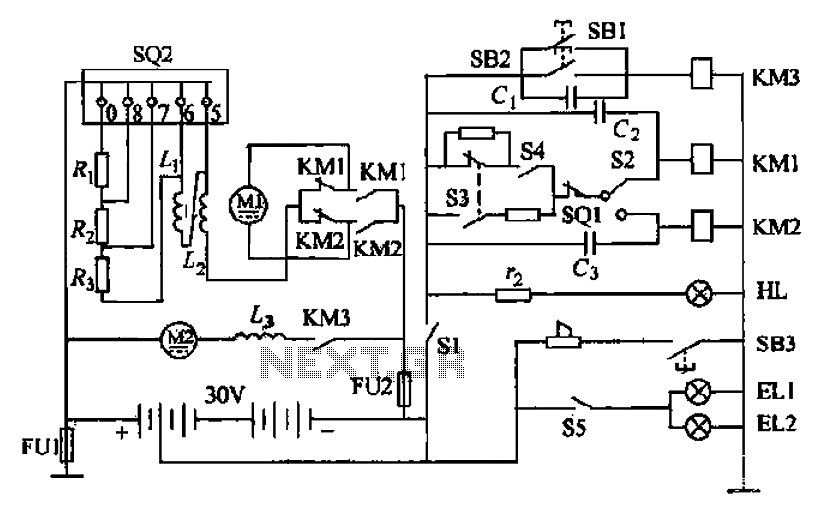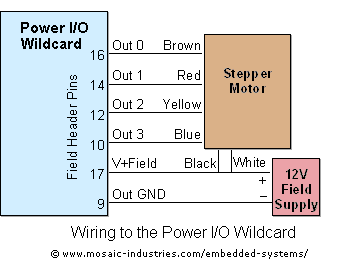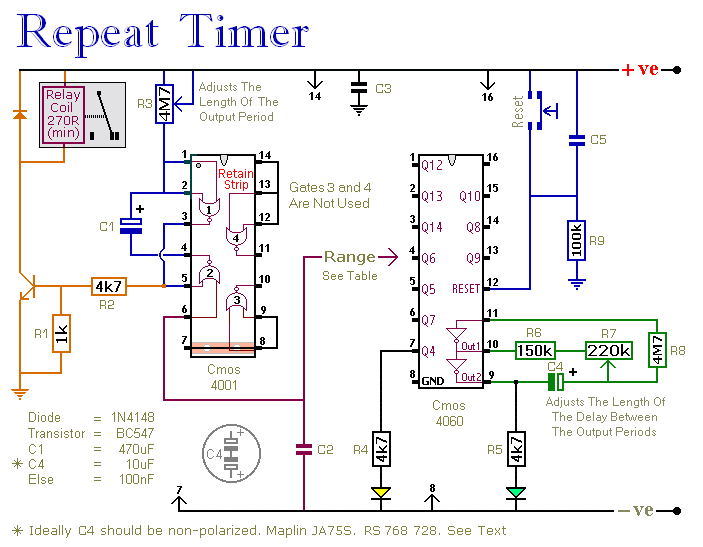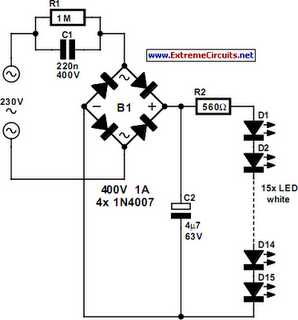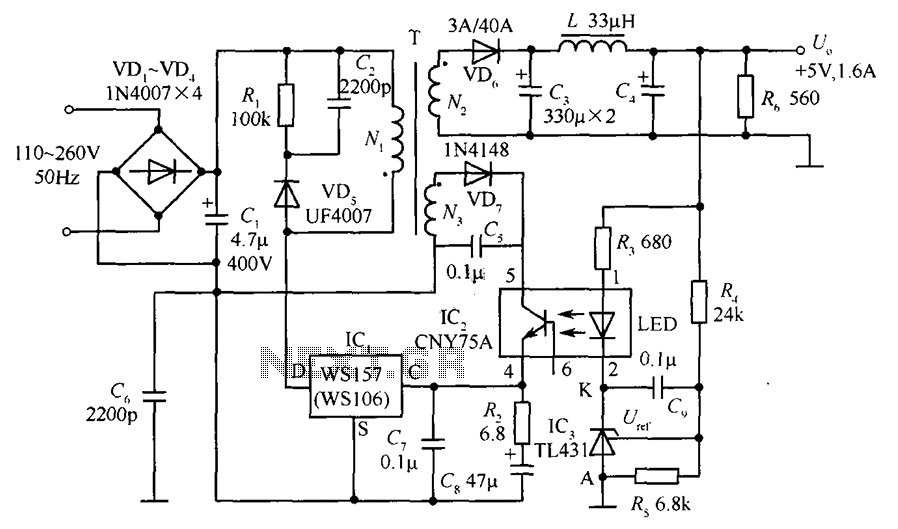
LM3551 LM3552 led driver schematic circuit design
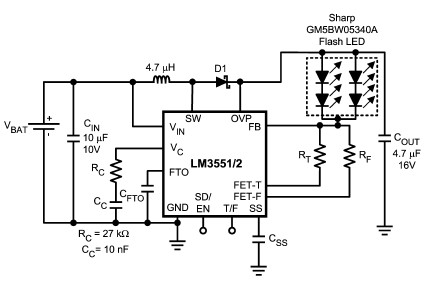
The LM3551 and LM3552 are fixed frequency, current mode step-up DC-DC converters featuring two integrated NFETs. These devices facilitate the design of a straightforward and highly precise LED brightness control system. They are capable of driving loads up to 1A from a single-cell Li-Ion battery. The LM3551 and LM3552 can operate in either a high power Flash mode or a lower power Torch mode, controlled via the TORCH FLASH pin. A programmable timeout function on the FTO pin ensures that the internal NFETs turn off after a user-defined period. An external SD pin (for the LM3551) or an EN pin (for the LM3552) allows the device to enter a low power shutdown mode. In shutdown mode, the feedback resistors and load are disconnected from the input to prevent leakage current paths to ground. The RT value for this LED driver circuit is 17 ohms, while the RF value is 6.5 ohms. The output current specifications are 250mA for IFlash and 75mA for ITorch. Key features of this LED driver project include flash timeout protection, independent Torch Flash shutdown modes, LED disconnection during shutdown, programmable soft-start to limit inrush current, over-voltage protection, and a wide voltage range of 2.7V to 5.5V, with a constant switching frequency of 1.25MHz.
The LM3551 and LM3552 are designed to efficiently manage LED lighting applications, particularly for devices requiring variable brightness levels. The step-up conversion capability allows for effective utilization of a single-cell Li-Ion battery, making these converters suitable for portable applications. The integrated NFETs minimize external component count, simplifying the overall circuit design.
In high power Flash mode, the system can deliver a peak output of 250mA, ideal for applications requiring short bursts of intense light, such as camera flashes. Conversely, the lower power Torch mode provides a steady output of 75mA, suitable for continuous lighting applications where energy efficiency is paramount. The TORCH FLASH pin facilitates easy switching between these modes, allowing for flexible operation based on user needs.
The programmable timeout function via the FTO pin is crucial for preventing overheating and excessive power consumption. By defining a specific operational period, the user can enhance the longevity of the LEDs and the overall device. The shutdown features, controlled by the SD or EN pins, contribute to energy conservation by disconnecting the load and feedback resistors, effectively eliminating any potential leakage paths.
The resistor values, RT and RF, are critical for setting the desired output currents and ensuring that the LED driver operates within its optimal parameters. The wide input voltage range of 2.7V to 5.5V allows for compatibility with various battery types and ensures stable performance across different operating conditions. The fixed switching frequency of 1.25MHz aids in minimizing the size of external components, such as inductors and capacitors, while maintaining efficient operation.
Overall, the LM3551 and LM3552 provide a robust solution for LED driving applications, combining flexibility, efficiency, and user control in a compact design.Using the LM3551 and LM3552 are fixed frequency, current mode step-up DC DC converters with two integrated NFETs we can design a very simple and high precision LED brightness control system. The devices are capable of driving loads up to 1A from a single-cell Li-Ion battery. The LM3551 and LM3552 can drive one or more high current flash LEDs eithe r in a high power Flash mode or a lower power Torch mode using the TORCH FLASH pin. A programmable Timeout function on the FTO pin forces the internal NFETs to turn off after a certain user defined time. An external SD pin (LM3551) or EN pin (LM3552) is available to put the device into low power shutdown mode.
During shutdown, the feedback resistors and the load are disconnected from the input to avoid leakage current paths to ground. The RT value for this LED driver circuit is 17 ohms and the value for the RF is 6. 5 ohms. The output current for IFlash is 250mA and for the ITorch is 75 mA. Some of the features of this LED driver electronic project are : flash timeout protection, independent Torch Flash Shutdown modes, LED disconnect in shutdown, programmable soft-start limits inrush current, over-voltage protection, wide voltage range 2.
7 to 5. 5V, 1. 25MHz constant switching frequency. 🔗 External reference
The LM3551 and LM3552 are designed to efficiently manage LED lighting applications, particularly for devices requiring variable brightness levels. The step-up conversion capability allows for effective utilization of a single-cell Li-Ion battery, making these converters suitable for portable applications. The integrated NFETs minimize external component count, simplifying the overall circuit design.
In high power Flash mode, the system can deliver a peak output of 250mA, ideal for applications requiring short bursts of intense light, such as camera flashes. Conversely, the lower power Torch mode provides a steady output of 75mA, suitable for continuous lighting applications where energy efficiency is paramount. The TORCH FLASH pin facilitates easy switching between these modes, allowing for flexible operation based on user needs.
The programmable timeout function via the FTO pin is crucial for preventing overheating and excessive power consumption. By defining a specific operational period, the user can enhance the longevity of the LEDs and the overall device. The shutdown features, controlled by the SD or EN pins, contribute to energy conservation by disconnecting the load and feedback resistors, effectively eliminating any potential leakage paths.
The resistor values, RT and RF, are critical for setting the desired output currents and ensuring that the LED driver operates within its optimal parameters. The wide input voltage range of 2.7V to 5.5V allows for compatibility with various battery types and ensures stable performance across different operating conditions. The fixed switching frequency of 1.25MHz aids in minimizing the size of external components, such as inductors and capacitors, while maintaining efficient operation.
Overall, the LM3551 and LM3552 provide a robust solution for LED driving applications, combining flexibility, efficiency, and user control in a compact design.Using the LM3551 and LM3552 are fixed frequency, current mode step-up DC DC converters with two integrated NFETs we can design a very simple and high precision LED brightness control system. The devices are capable of driving loads up to 1A from a single-cell Li-Ion battery. The LM3551 and LM3552 can drive one or more high current flash LEDs eithe r in a high power Flash mode or a lower power Torch mode using the TORCH FLASH pin. A programmable Timeout function on the FTO pin forces the internal NFETs to turn off after a certain user defined time. An external SD pin (LM3551) or EN pin (LM3552) is available to put the device into low power shutdown mode.
During shutdown, the feedback resistors and the load are disconnected from the input to avoid leakage current paths to ground. The RT value for this LED driver circuit is 17 ohms and the value for the RF is 6. 5 ohms. The output current for IFlash is 250mA and for the ITorch is 75 mA. Some of the features of this LED driver electronic project are : flash timeout protection, independent Torch Flash Shutdown modes, LED disconnect in shutdown, programmable soft-start limits inrush current, over-voltage protection, wide voltage range 2.
7 to 5. 5V, 1. 25MHz constant switching frequency. 🔗 External reference
